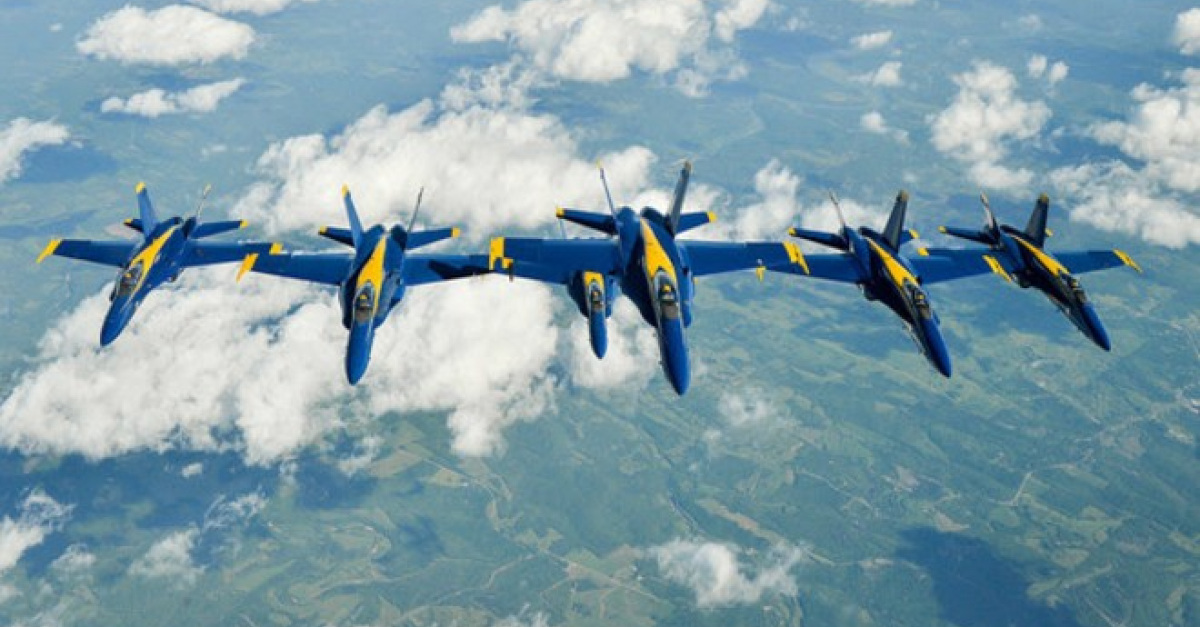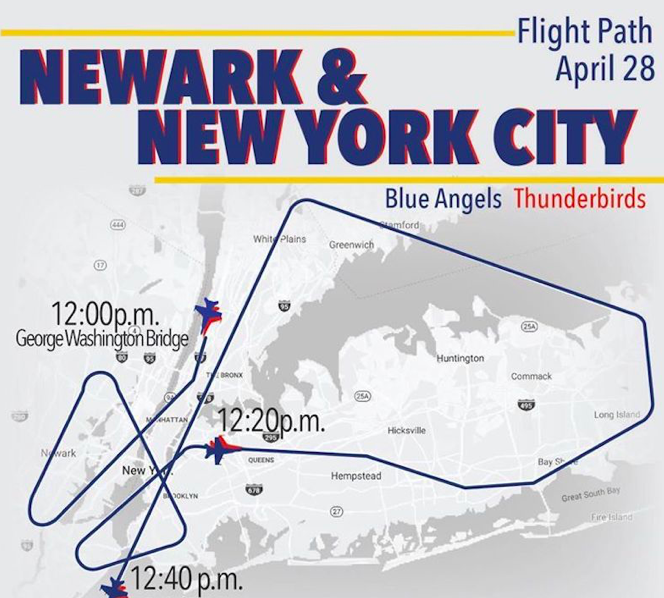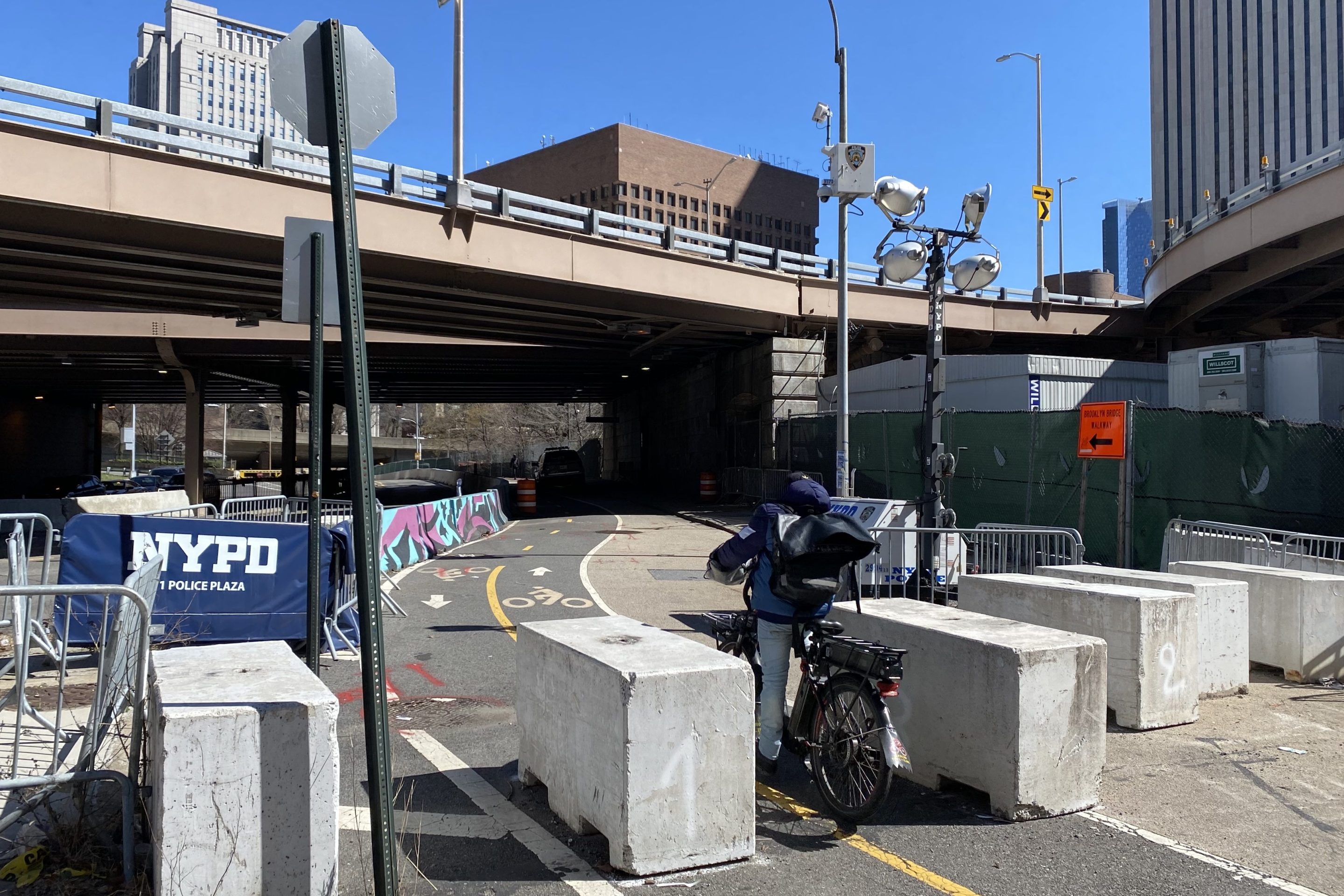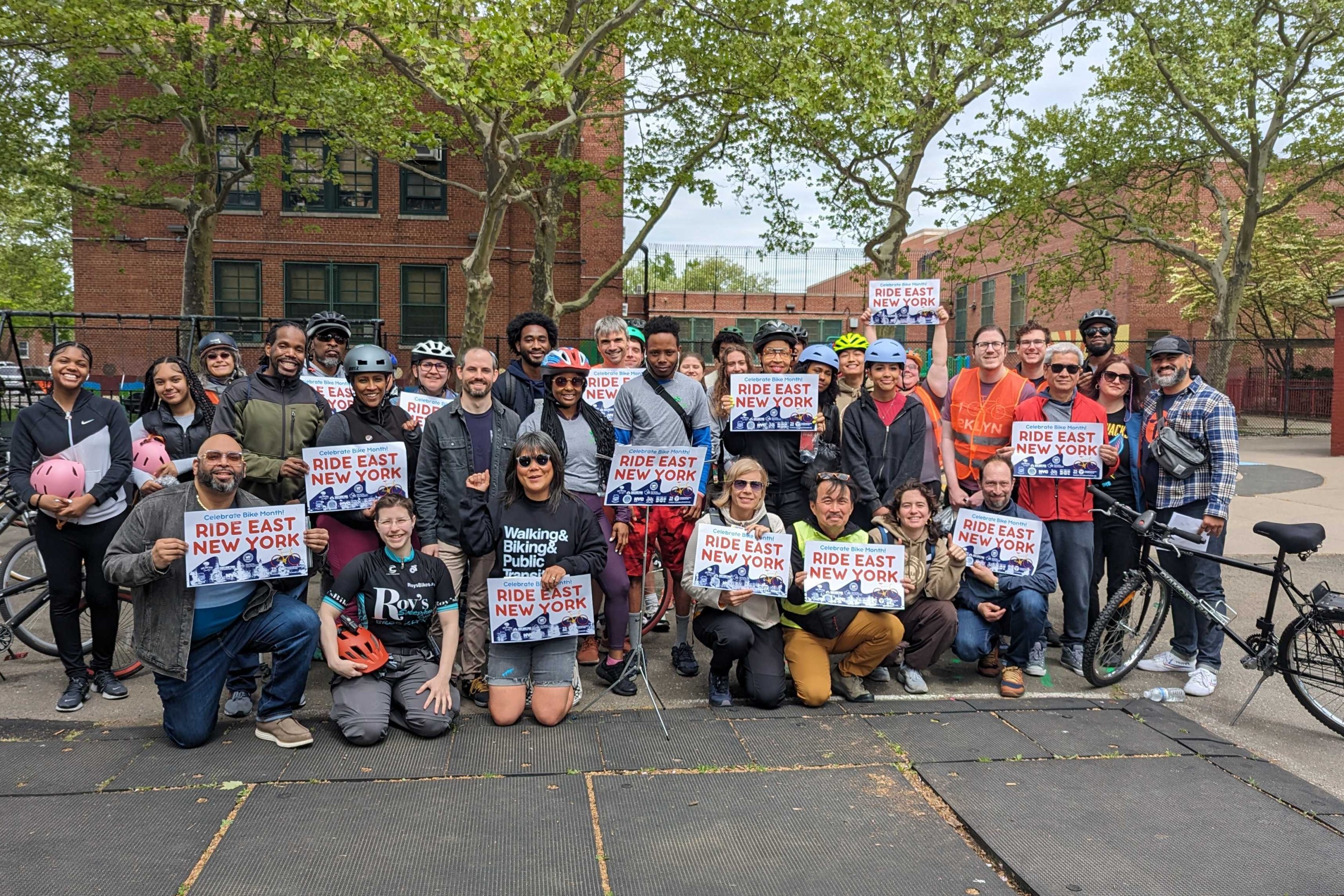Look, up in the sky — is it a bird, is it a plane, is it Superman? No, it's just anxiety and pollution wrapped up in the flag.
The Navy's Blue Angels and the Air Force's Thunderbirds will take to the skies over New York on Tuesday from noon to 12:40 p.m for "Operation: America Strong" — also known as a "salute to frontline COVID-19 responders."
Some salute. If spewing pollution over a city battling a respiratory disease with little but scorn from the federal government is a salute, it's definitely the one-finger kind.
Let's do the math on this flyover:
- Each Blue Angel-type jet (and the C-130 companion plane) consumes 1,300 gallons of jet fuel per hour.
- Assuming six fighters in each group (plus one support plan each), that's 14 planes, or 18,200 gallons of jet fuel per hour.
- The flyover is 40 minutes, so that's 12,133 gallons (not counting rehearsal time, approaches or the dozens of other cities that are getting their own flyovers in the next few days).
- A gallon of jet fuel weighs 6.8 pounds, so that's 82,506 pounds of jet fuel, or 37,424 kilograms.
- Each kilogram of burning jet fuel releases 3.16 kilograms of climate-changing CO2 into the air, so that's 118,259 kilograms of CO2, or 118 metric tons.
- The average passenger car emits about 404 grams of CO2 per mile, according to the EPA.
- So those 118 metric tons, or 118,259,000 grams, are the equivalent of the amount of CO2 produced by a car being driven 292,720 miles — or 292,720 cars driving to the corner store and back. Thanks to the dramatically reduced number of car trips happening during the COVID-19 lockdown, those 292,720 miles are roughly 2 percent of the total number of miles being driven in New York on the average coronavirus day (you know, these glorious days when the air has been so clean).
Don't bother holding your breath as the Blue Angels roar over your roof, though. Carbon dioxide stays in the atmosphere for decades. Some — about 20 percent — stays in the atmosphere for thousands of years.
Let's talk about particulates — which are microscopic toxic pellets that result from the combustion of fossil fuel. According to the FAA, "particle pollution and ground-level ozone are the most widespread health threats."
"Smaller particles, which are typical of aviation emission, tend to pose higher risk since they migrate deeper into the lungs and bloodstream causing cardiovascular effects and even affecting the nervous system," the agency said. (There does not appear to be substantial research on how much particulate matter is created from the combustion of a gallon of jet fuel. But who needs an actual number — by the time you read this sentence, some microparticles have already gotten into your lungs.)
So the federal government's "tribute" to New York's heroic workers is a sizable contribution to climate change — in a waterfront city that will be consumed by the ocean if we don't stop doing this kind of crazy shit. But this is how America honors people, apparently.
"What we're doing is we're paying tribute to our front line health care workers confronting COVID," President Trump said the other day. "This is a tribute to them, to our warriors. Because they are equal warriors to those incredible pilots and all of the fighters that we have for the more traditional fights that we win and we win." (For a reminder on how the president treats such "heroes" in Democratic-leaning states, check out what he said on Monday. That's not patriotism — it's red meat for his red state base. And Staten Island.)
Pollution that lasts for millennia. If you were honestly designing a tribute to workers battling a respiratory disease, wouldn't the conversion of an old parking lot into a grove of carbon-sucking trees be better?
Beyond pollution, low-flying military jets don't exactly promote calm in a rattled city. Each Blue Angel plane generates more than 20,000 pounds of thrust, which creates a window- and ground-shaking roar (just ask any New Yorker who was living in the city after 9/11, when military jets strafed the region). The planes fly at 1,500 feet, or about 276 feet lower than the top of One World Trade Center, a building that should never be the backdrop for low-flying planes.
There's no fathoming how some New Yorkers will experience the din of those planes or the sight of them screaming across the skyline low altitude. Some New Yorkers won't even notice. Others will be thrown back into memories we'd all like to forget.
This tribute isn't cowbells and clapping at 7 p.m., people. Couldn't the federal government just send money (or bail out the MTA) instead? That would be a tribute.
Gersh Kuntzman is the editor of Streetsblog. When he gets annoyed, he writes the Cycle of Rage column, which is archived here.






